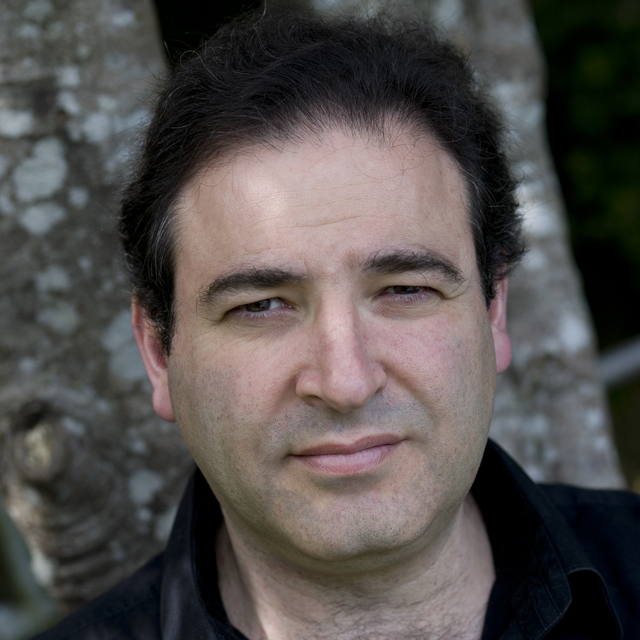In our Composer Spaces series, we ask composers to share a bit about their working environment and to give us a brief insight into their process. This week we present composer, John Psathas.
Now that I'm freelance, I'm usually composing by 6.30-7.00am and work right through the day until 8-9pm. I'll do this 6 days a week on average. Closer to big deadlines it will be 7 days a week.
I compose in a small house at Waitarere Beach. Looking beyond the computer monitor I can see the ocean and the distant horizon. It's good to be able to do that. I can break for walks on the beach or in the forest, and I can always hear the ocean.
I mostly work with Logic (on an iMac), and I have a parallel portable setup in a MacBook pro with identical sample libraries. I use dropbox to back up and have access to all up-to-date versions of everything I'm working on (and an archive of all existing work), anywhere that I'm travelling. I also have an additional computer backing everything up at home in Wellington - just in case.....
At Waitarere I have an upright piano, where I spend a lot of time thrashing out ideas. Connected to the computer there's a Nord Stage II for playing with the ideas in a virtual instrument environment.
I have a lot of sample libraries. Vienna, East West, Kontakt, 8Dio, ModWheel, and more recently the new (and amazing) Spitfire libraries.
I still write out my scores with pencil and paper then give to a typesetter who creates the Sibelius files. I've just finished writing out a new percussion concerto and calculated that across all of the instruments involved, I hand-wrote just under 30,000 bars. The reason I stick to this process is that it allows a one-time-only intimate exploration of every single event in the music. It's incredibly valuable and very important for really knowing the details of one's work (which helps a lot in rehearsal).

The unknown is very important to me. My process is one of discovering a piece, of experiencing the piece revealing itself.
I spend a great deal of time finding the beginning. That involves a lot of failure. Something I've developed over time is an improved ability to sense the potential in a small amount of material. After quite a bit of trying and failing I'll arrive at the first few seconds of a new piece. At some point, I'll know that this is it, the 'stuff'. And then all I aim for is the next few seconds. The relationship between the first few seconds and the next few seconds tells me a great deal about what might be ahead. But at this stage in the process, there are near-infinite possibilities. So I start exploring.
I slowly extend the piece forwards deciding solely on the grounds of whether the new few seconds feel right. I am utterly ruthless about allowing any material the right to exist in the work.
Working with sample libraries allows me to hear everything as it's forming, and test countless options. If I'm exploring a possible syncopation in a bar of one instrument within an ensemble, I'll usually try out every possible position of that rhythmic disruption to be sure my initial instinct has put it in the best possible place. It's very detailed, exacting work, but in itself is an ongoing and very fertile learning process.
What I've described above is the same for every piece. It's my way of working. It's only different when I'm working on collaborative projects, like film-scoring, WOW, arrangements and orchestrations for groups in crossover projects etc.
Everything is on my website's events and performances page here: https://www.johnpsathas.com/events-and-performances-1
SOUNZ blog is designed for expressive discussion and debate amongst the arts and broader community. This is intended to be a safe space so please remember to keep comments respectful and avoid personal attacks, criticisms of specific organisations and defamatory language. Comments are moderated to ensure that they comply with SOUNZ’s Community guidelines.
